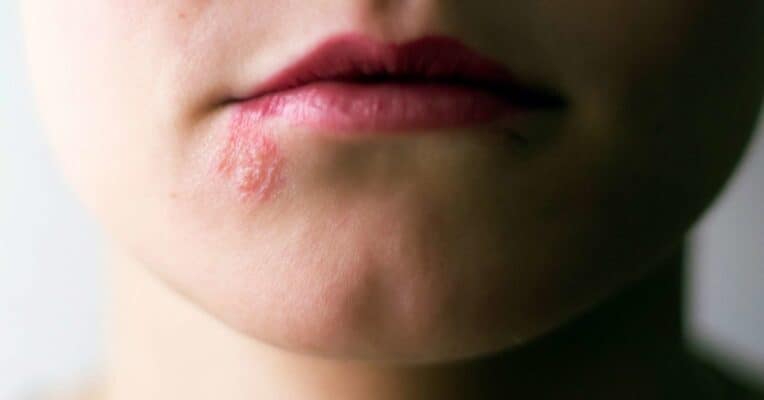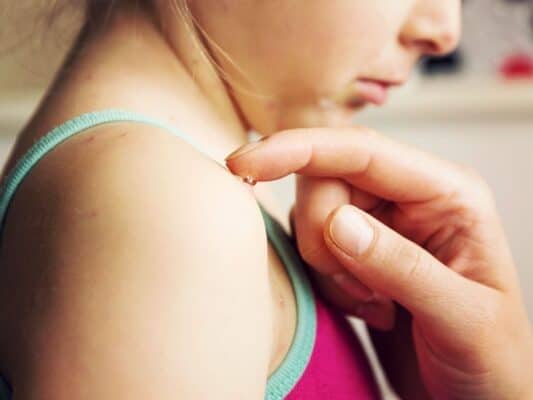What are Shingles?

Shingles are an infection caused by the varicella-zoster virus, which is the same virus that also causes chickenpox. The virus can live in your body for several years after the infection from chickenpox has subsided, before reactivating and coming back as shingles. Shingles are also commonly known as herpes zoster. This is a type of viral infection that can be characterized by a red rash on your skin that causes a burning sensation and pain. Shingles normally pop up as a streak of blisters, typically on the neck, face, or torso.
In most cases, shingles usually disappear within 2 to 3 weeks. A case of shingles will rarely occur in the same person more than once. The Center for Disease Prevention and Control estimates that 1 out of 3 people in America will experience a case of shingles at least once in their life.
What are the symptoms of Shingles?
The very first symptom of shingles is a burning sensation and pain. The pain is normally felt only on one side and shows up in small patches, typically followed by a red rash. The characteristics of the rash include:
- Itching
- Red patches
- Blisters filled with fluid that can break easily
- Can appear on the ears and face
- Goes around from the torso to the spine
In some cases, people have experienced more severe symptoms compared to rash and pain with shingles. These symptoms can include:
- Fatigue
- Chills
- Fever
- Headache
- Muscle weakness
In other cases some serious and rare complications of shingle are:
- Bacterial infection, which causes the skin to turn red, becoming swollen and warm to the touch
- Rash or pain in the eye. Immediate treatment is advised to prevent or avoid permanent damage to the eye
- Severe pain in one ear or loss of hearing and dizziness
Shingles on the face
Shingles typically appear on one side of the chest or the back but might also occur as a rash on one side of the face. Should the rash appear in or close to the ear, it might cause an infection, resulting in hearing loss, weakness in the facial muscles, and adversely affecting your balance. Shingles can also appear in your mouth, and this can cause extreme pain. It can cause difficulties while eating, and it may also affect your sense of taste.
Shingles can also appear on your scalp, causing some sensitivity while you brush or comb your hair. If left for too long without being treated, shingles on the scalp could lead permanent bald patches.
Shingles in the eye
Shingles known as herpes zoster ophthalmic or ophthalmic herpes zoster can also occur around and in your eye, and appears in approximately 10% to 20% of people who have contracted shingles. A rash with blisters might appear on your foreheads, eyelids, and sometimes on the side or tip of your nose. You can also experience symptoms like throbbing or burning in your eye, swelling, blurred vision, and redness and tearing.
Even after the rash subsides, you might still experience some pain in your eye due to nerve damage. The pain will slowly disappear after some time in most people. If left untreated, shingles in your eye can cause some serious issues such as permanent scarring because of the swelling in the cornea and long term loss of vision. If you think that you might have shingles around and in your eye, it is vital that you immediately visit a doctor.
Shingles on the back
While rashes resulting from shingles normally occur on one side of the waistline, a streak of blisters can also appear on your lower back or on both sides of the waistline.
Shingles on the buttocks
Shingles can also appear on the buttocks. Shingles usually only affect one side of the body, so it is possible for one to have a rash on only one side of their buttocks. As with other parts of your body, when shingles appear on your buttocks, it can at first cause symptoms such as pain, itching, or tingling. Blisters or a red rash may also appear after a few days. In some cases, people may feel some pain but not develop a rash.
What is the best cream to put on shingles

Scratching rashes from shingles can prolong blisters cause scarring. When a cool compress does not alleviate the itching, a healing bath, cornstarch or baking soda mixture can be used. It is also advisable to use soothing creams and lotions. Creams and lotions may not accelerate the healing process, but they can raise your level of comfort.
However, avoid perfumed and scented lotions as they can cause more irritation. Use creams and lotions sparingly as heavy usage can lengthen the process of healing and prevent the sores from drying out. Applying antibiotic ointment on sores is also not recommended.
Apply creams and lotions containing capsaicin as a natural ingredient on your sores at least three to four times a day. Capsaicin provides an anti-inflammatory effect to relieve the pain. The sensation of pain may increase upon application of the cream initially but will subside over time. These creams work by blocking the pain signal sent to the brain. You can also use calamine lotions after taking showers and baths to help dry out the blisters and soothe irritated skin.
